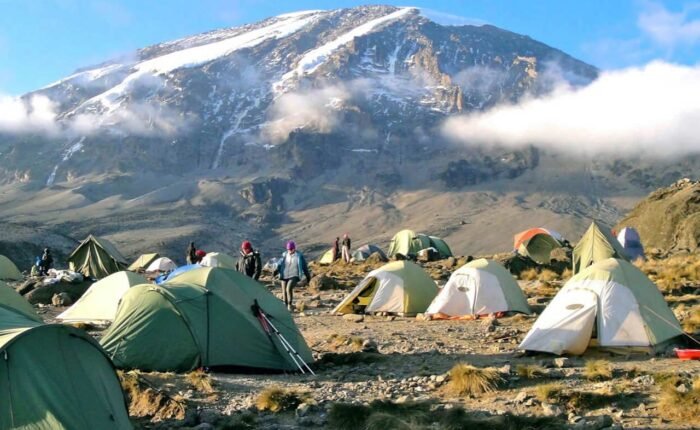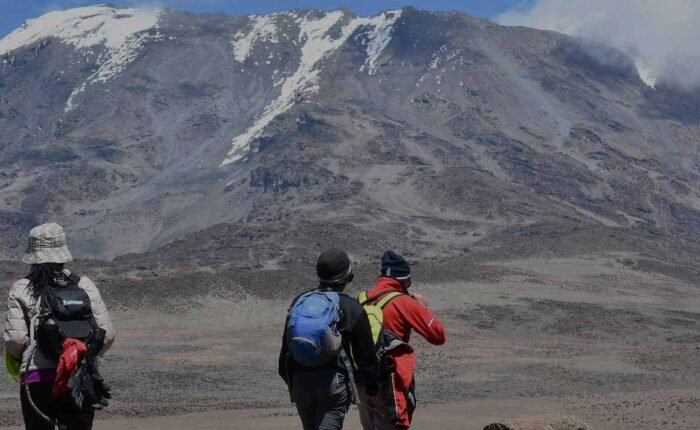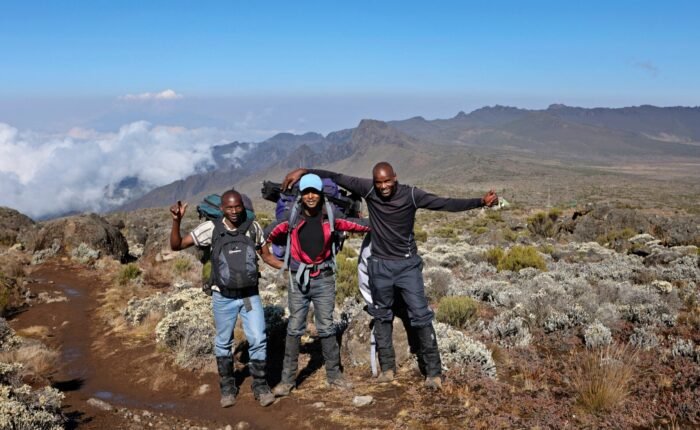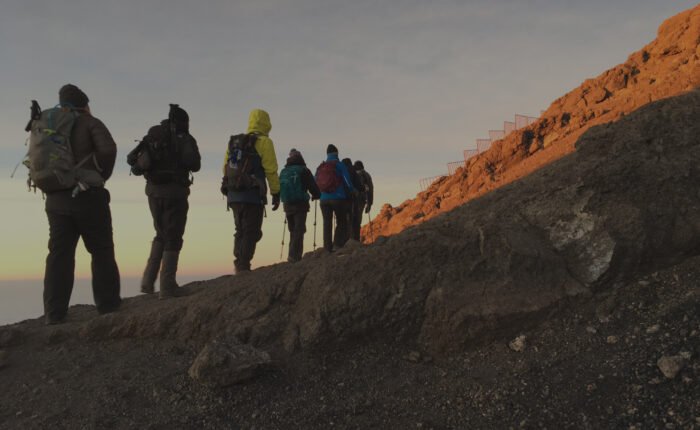Rongai Route – Kilimanjaro’s Quiet Ascent from the North
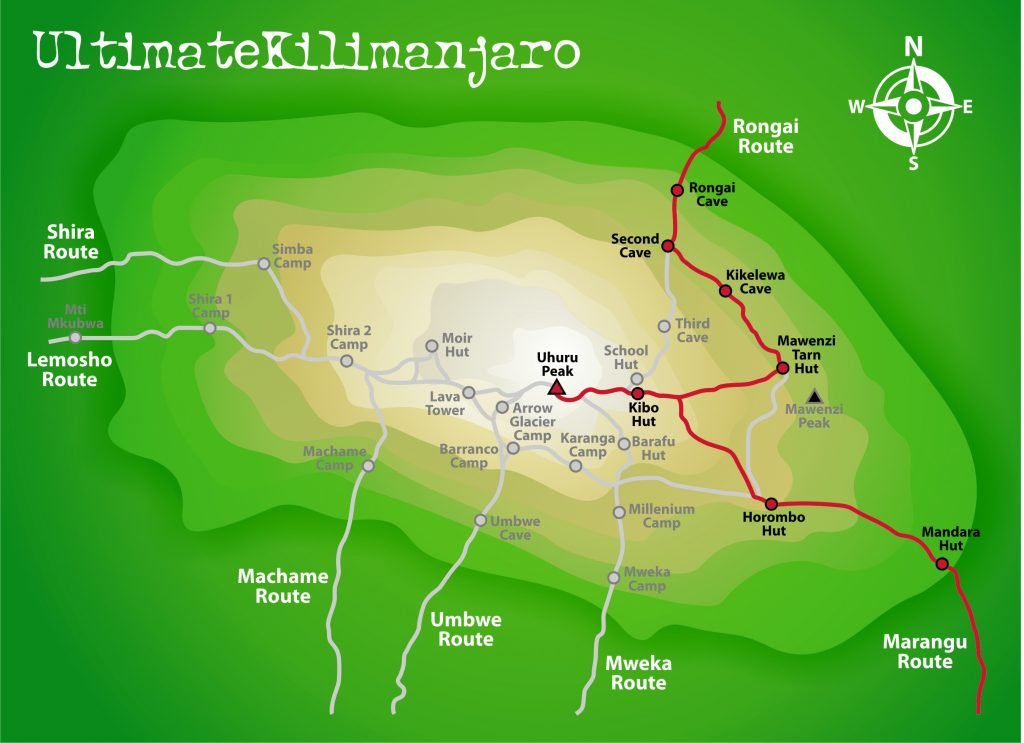
The Rongai Route is the only route that approaches Mount Kilimanjaro from the northern side, near the Kenyan border. Known for its tranquility, steady gradient, and high success rate, Rongai is a great choice for those seeking a less crowded and gradual ascent with a remote wilderness feel.
It’s also an ideal option during the rainy season, as the northern side of Kilimanjaro tends to be drier than the southern routes.
Key Facts About the Rongai Route
- Route Name: Rongai Route
- Duration: 6 or 7 days (7 recommended for acclimatization)
- Distance: ~72 km (45 miles)
- Difficulty: Moderate
- Success Rate: High – due to gradual ascent and extra acclimatization day
- Accommodation: Camping only
- Scenery: Diverse – forest, moorland, alpine desert, and glacier
- Crowds: Low – especially on early days
Why Choose the Rongai Route?
- Quiet Trail: Offers a peaceful experience with fewer trekkers.
- Dry Conditions: Best route during wet seasons (March–May, November).
- Wildlife Viewing: Good chance of spotting colobus monkeys and antelope in the early stages.
- Easier Gradient: Gentle and steady ascent makes it suitable for beginners and those worried about acclimatization.
Note: While less scenic in the early days compared to southern routes, the trail becomes dramatically beautiful as you approach the summit from the east via the Kibo Saddle.
Detailed 7-Day Rongai Route Itinerary
Day 1: Nalemoru Gate (1,950m) to Simba Camp (2,625m)
- Distance: 8 km
- Time: 3–4 hours
- Habitat: Rainforest
After registration at the Nalemoru Gate, begin trekking through farmland and forest. The trail is gentle and offers the chance to see monkeys and forest wildlife.
Day 2: Simba Camp to Second Cave Camp (3,450m)
- Distance: 7 km
- Time: 3–4 hours
- Habitat: Moorland
Climb steadily through moorland with views of Kibo Peak ahead and the Eastern Icefields.
Day 3: Second Cave Camp to Kikelewa Camp (3,630m)
- Distance: 9 km
- Time: 4–6 hours
Continue across the moorland, gaining altitude slowly to assist with acclimatization. The campsite is tucked in a sheltered valley.
Day 4: Kikelewa Camp to Mawenzi Tarn Camp (4,330m)
- Distance: 6 km
- Time: 4–5 hours
- Habitat: Alpine desert
A short but steep climb up a rocky ridge with incredible views. Camp is set near Mawenzi Peak, Kilimanjaro’s second highest summit.
Day 5: Acclimatization Day at Mawenzi Tarn Camp (optional)
- Highly recommended to rest or take a short acclimatization hike for better summit success.
Day 6: Mawenzi Tarn Camp to Kibo Hut (4,700m)
- Distance: 9 km
- Time: 5–6 hours
Cross the barren saddle between Mawenzi and Kibo Peaks to reach Kibo Hut, the base camp. Rest early for the summit attempt.
Day 7: Kibo Hut to Uhuru Peak (5,895m), then down to Horombo Hut (3,720m)
- Distance: 6 km ascent + 15 km descent
- Time: 6–8 hours up, 6–8 hours down
Start the final ascent around midnight via Gilman’s Point (5,685m), then follow the crater rim to Uhuru Peak, Africa’s highest point. After a short celebration, descend all the way to Horombo Hut.
Day 8: Horombo Hut to Marangu Gate (1,860m)
- Distance: 20 km
- Time: 5–7 hours
A long but rewarding final descent through heath and rainforest. Celebrate completion and receive your summit certificate at the gate.
Tips for Trekking the Rongai Route
- Choose 7 Days: Adding an acclimatization day improves success and safety.
- Pack for Varied Weather: Though drier, it can still get cold and windy near the summit.
- Stay Hydrated: Especially during the longer days across the saddle and summit night.
- Bring Trekking Poles: Help reduce strain on knees, especially during descent.
- Climb with Certified Operators: Ensure proper guidance, support, and safety measures.

